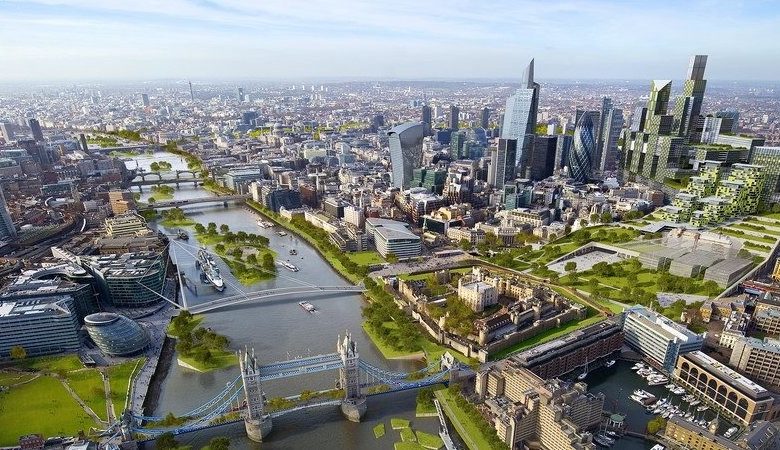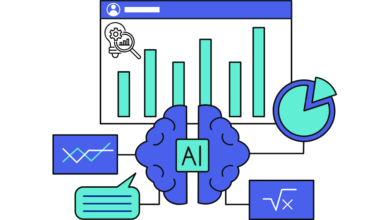
“As an architect, you design for the present, with an awareness of the past, for a future which is essentially unknown” – Sir Norman Foster.
Prelude to Foundation
An architect uses their imagination to create a world that does not yet exist. It starts with a vision; you close your eyes and imagine the world of tomorrow.
I am inviting you to take this journey, today.
I will be your guide through a city that you don’t know yet. The name of the city is irrelevant.
It could be anywhere; it could be a city that you know, it may be the city where you live or it may not be a city at all, now; it could be a piece of land, desert, or water…
Let me show you the future where the physical and virtual worlds merge.

Chapter 1: City States
Unlike today, where the power of cities is limited, the future will be different. The future power of cities will be much greater than we are used to, today.
The only time in history we can see something similar was in the medieval ages when cities became autonomous enclaves, centres of commerce with local governance and defence, city-states, in fact.
The Blockchain will change local economies forever and AI-enabled services will convert cities into ‘platforms’.
However, they will become increasingly vulnerable to cyber-attacks that could immobilize their entire city infrastructure. Therefore, using public cloud services will be extremely risky because a hostile attack on the Cloud infrastructure could damage many cities at the same time.
States, though, are harder to defend because of their sheer scale.
So, just like the walled cities of the medieval age, the AI and Blockchain-powered city-states of the future will build their own local defence systems.
Chapter 2: No cars allowed
Many cities will adopt policies that will disable free vehicular access to city centres.
The traffic allowed in the city will be centrally controlled and monitored, just like air traffic is today.
Vehicle operators will be both public and private companies but the vehicles will be connected to a centrally controlled network.
An increasing majority of supply vehicles will not have a human driver and will be all-electric, making cities greener with a better environment and much safer for people.
Private cars will be co-owned in sharing schemes, similar to a Cloud subscription (Car as a Service).
However, unlike Uber, there will be no drivers and there will an option to travel without other passengers.
Many cities will limit car usage by mandating citizens to use a non-carbon fuel-based public transport system that will produce zero emissions.

Chapter 3: Greener cities
Just like large factories with smoking chimneys had disappeared in the 21st century from cities to be pushed out to the surrounding countryside, forcing their workforce to travel many miles in cars and public transport, tomorrow’s greener cities will relocate many clean manufacturing facilities back into cities because the supply chain will move underground.
Just like there will be networks of driverless electric supply trucks, there will be underground systems for the delivery of goods, without the need for surface roads, which will be operated 24/7 by automated delivery systems allowing the rapid delivery of any goods and products to any location in the city.
Cities that, currently, are full of motor vehicles creating endless traffic jams, will become green places where people will increasingly walk and use other forms of non-polluting personal transport, like bicycles, improving people’s health.
Chapter 4: Lighting fast crime prevention
Every road in the city will be part of the urban network allowing the rapid deployment of defence systems that protect the lives of citizens and their guests.
Given the low levels of urban traffic compared with today, the movement of defence systems will be extremely fast because the defence systems will be a combination of land and air defence systems that will the ability to coordinate, in real-time, their activities with other units around the city.
Computer vision and voice will enable human operators, sitting in remote locations, to act as though they were on the scene.
The city defence system also will also be able to stop autonomous vehicles and other autonomous machines in the case of malfunction or deliberate malicious changes of machine behaviour (e.g. attempts to hijack machines for terrorist attacks).

Chapter 5: Citizen services
Unlike today, when your interaction with local authorities is limited, in the city of the future you will constantly be in touch with the city platform that will connect you with everything in the city.
For example, smart street signs will know your presence and who you are.
The same will be true for your transportation vehicle that will be in constant communication with the city platform during your journeys.
Your personal devices will also be location-aware and you will be automatically pre-identified for interacting with the city services.
Any interaction with the city will be personalized.
The city will know you and will change from an authority to a service provider.
Chapter 6: City corporations
Some cities will be bought by corporations or built from scratch as new city projects away from existing cities.
Many metropolitan cities will become a web of privately owned areas with their own regulations and zones accessible only to local residents and permitted visitors, like gated communities today.
City corporations will be publicly traded companies.
Shares will be tokenized using the Blockchain, allowing city corporations to create their own currencies.
City corporations will compete against each other to create an environment with the highest level of safety, happiness, and surroundings where people like to live and work.
Shared ownership of city properties will change today’s real estate model to allow fractional ownership.

Chapter 7: Rapid transportation intercity systems
The rise of privately-owned city corporations will increase the speed of implementation of new transport systems between cities that will also be financed by private corporations.
The speed of transportation will be much higher because intercity systems will be fully autonomous replacing traditional (and, sometimes, competing) bus and train systems.
These rapid transportation systems will be connected with airports and launching pads for air vehicles that will provide long-distance travel.
The terminals for rapid intercity transportation will be located on the outskirts of the cities and will be connected to the autonomous traffic system providing transport to, and within, the city.
Chapter 8: City banking corporations
Local economies will be financed by local banks in which the city corporations will hold shares and will issue local banking licenses.
Local banks will be connected to the Blockchain-based city identity system that will enable banks to reduce the risk of fraud and their costs of operation.
The majority of banking operations will be available 24/7 in automated self-service branches and kiosks spread throughout the city and also in vehicles.
Banking will be also connected to the local telecommunication networks to enable residents and visitors to access the banking system from their devices and to those authorised machines that will make use of banking services on their behalf.
City banking corporations will be the majority of joint ventures between city corporations and an international banking group.

Chapter 9: Integrated digital healthcare services
Many city corporations and city-states will implement an automated public healthcare system that will allow citizens to access healthcare services from their homes and dedicated public places.
Many consultations and treatments will be performed remotely, as will be the monitoring of patients’ health.
Healthcare data will be stored in large data lakes that could be enriched with data from other cities to speed up diagnostic times and improve treatments.
Healthcare data will be used by city corporations to identify how improvements to their city (e.g. adding more green areas) will benefit those living in specific locations.
Chapter 10: Shopping and the virtual commerce experience
The physical and virtual world shopping experience will merge.
City corporations will control which retailers can operate in their city.
Unlike traditional cities today, whose income is based on taxing local businesses and citizens, these city corporations will be investment conglomerates that will operate their cities as platforms, similar to websites today.
They will compete with each other to attract the best citizens, businesses, and organizations which will benefit their economies.
Therefore, the cities of tomorrow will require retailers not just to pay taxes but to invest in the best experience for their citizens and visitors.
Many retailers may even be granted a city-wide, time-limited but renewable monopoly, but they will have to guarantee higher standards than we are used to today.

Conclusion
These are not just visions.
Many of this is already happening.
How fast the change from standard cities to city-states and city corporations will happen depends, primarily, on how quickly increasingly cash-strapped governments will allow private corporations to own and create cities and parts of existing cities.
This will mostly be influenced by the severity of future cybersecurity attacks, which will determine if nation-states can successfully defend their cities without private help.
Many cities, very likely, will start with a hybrid model, where some parts of the city will be fully owned by a private corporation.
It’s also likely that many historical cities will become protected from private ownership and will force private corporations to start new cities outside existing city borders.
These newly-built cities will become experimental playgrounds for new community models (some, perhaps, not-for-profit) and technologies.
The question is not if this will happen. The question is how fast, and on what scale, it will happen.




One Comment